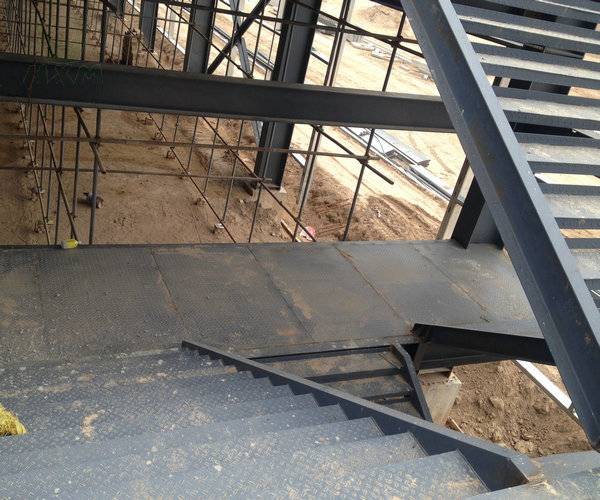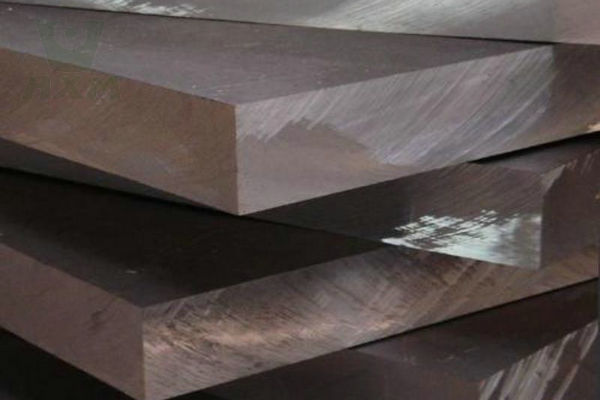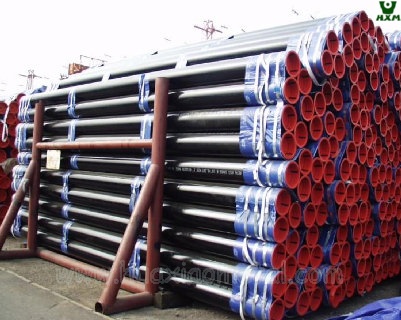Mild steel, also known as low carbon steel, is one of the most widely used materials in the construction and manufacturing industries. It is celebrated for its versatility, affordability, and relatively simple production process. With a carbon content typically ranging between 0.05% and 0.25%, mild steel balances ductility and strength, making it suitable for a wide range of applications. This article explores the various uses of mild steel, its properties, benefits, and limitations, as well as its role in different industries.

Properties of Mild Steel
Composition and Microstructure:
Mild steel primarily consists of iron and carbon. The low carbon content prevents it from becoming too hard or brittle, maintaining a balance that enhances its workability.
The microstructure of mild steel is composed mainly of ferrite and pearlite, contributing to its ductility and malleability.
Mechanical Properties:
Tensile Strength: Mild steel typically has a tensile strength of around 400-550 MPa. This strength is sufficient for many structural applications but can be enhanced through alloying and heat treatment.
Ductility: Mild steel is highly ductile, meaning it can be stretched or deformed without breaking. This property is crucial for processes like rolling, bending, and forging.
Weldability: The low carbon content in mild steel makes it easier to weld compared to high carbon steel. It can be welded using various techniques, including arc welding, MIG welding, and TIG welding.
Machinability: Mild steel is relatively easy to machine, allowing for efficient cutting, drilling, and shaping operations.
Physical Properties:
Density: Approximately 7.85 g/cm³, making it dense and heavy compared to non-metal materials.
Thermal Conductivity: High thermal conductivity enables efficient heat dissipation, which is beneficial in applications requiring thermal management.
Magnetic Properties: Mild steel is ferromagnetic, meaning it is attracted to magnets and can be magnetized, which is useful in various electrical and magnetic applications.
Uses of Mild Steel
Construction Industry:
Structural Steel:
- Mild steel is widely used in construction for making structural steel beams, columns, and frames. Its strength and ductility make it ideal for supporting large structures like buildings and bridges.
Reinforcement Bars:
- In concrete construction, mild steel rebar (reinforcing bars) is used to reinforce concrete structures. The steel provides tensile strength, while the concrete offers compressive strength, creating a durable and resilient composite material.
Fabrication:
- Mild steel is also used for fabricating architectural components such as gates, railings, and staircases. Its ability to be easily cut, welded, and shaped makes it a favorite among fabricators.
Automotive Industry:
Body Panels:
- Mild steel is commonly used for manufacturing car body panels due to its malleability and cost-effectiveness. It allows for efficient stamping and forming processes.
Chassis and Frames:
- The structural integrity of vehicles often relies on mild steel for the chassis and frame construction. Its strength ensures the safety and durability of the vehicle.
Exhaust Systems:
- Mild steel is used in exhaust systems, although it requires protective coatings to prevent corrosion from exposure to exhaust gases and moisture.
Manufacturing Industry:
Machinery and Equipment:
- Mild steel is used to manufacture various machinery and equipment components, including gears, shafts, and fasteners. Its machinability and strength make it suitable for these applications.
Pipes and Tubes:
- Mild steel pipes and tubes are used in plumbing, HVAC systems, and industrial applications for transporting liquids and gases.
Tools and Implements:
- Many hand tools and agricultural implements are made from mild steel due to its balance of strength and affordability.

Household Applications:
Furniture:
- Mild steel is used in the production of furniture such as bed frames, chairs, and tables. Its durability and ease of fabrication make it a popular choice for both indoor and outdoor furniture.
Appliances:
- Many household appliances, including refrigerators, washing machines, and ovens, use mild steel for their structural components due to its strength and cost-effectiveness.
Fencing and Gates:
- Mild steel is commonly used for making fences and gates. Its ability to withstand weather conditions, especially when coated or galvanized, makes it ideal for outdoor use.
Energy Sector:
Transmission Towers:
- Mild steel is used in the construction of transmission towers and pylons for power distribution. Its strength and ease of fabrication allow for the creation of tall, sturdy structures.
Oil and Gas Pipelines:
- Mild steel is used in the construction of pipelines for transporting oil and gas. The steel is often coated or lined to protect against corrosion.
Wind Turbine Components:
- Components of wind turbines, including the tower and internal framework, are often made from mild steel due to its strength and ability to withstand environmental stresses.
Transportation:
Railway Tracks:
- Mild steel is used in the construction of railway tracks due to its ability to withstand heavy loads and resist wear.
Shipping Containers:
- The frames of shipping containers are made from mild steel, providing the necessary strength to protect cargo during transportation.
Bicycles:
- Many bicycle frames are made from mild steel, offering a balance of strength, durability, and cost.
Benefits of Using Mild Steel
Affordability:
- Mild steel is one of the most cost-effective materials available, making it accessible for a wide range of applications. Its low cost is due to the abundance of raw materials and efficient production processes.
Versatility:
- The versatility of mild steel is unmatched. It can be easily cut, shaped, welded, and machined to suit various applications, from construction to household items.
Recyclability:
- Mild steel is highly recyclable, which contributes to its sustainability. It can be melted down and reused without losing its properties, reducing the environmental impact of steel production.
Ease of Fabrication:
- The ease with which mild steel can be fabricated makes it a favorite among manufacturers and fabricators. Processes such as welding, bending, and machining are straightforward, allowing for efficient production.
Strength and Durability:
- Despite its low carbon content, mild steel offers adequate strength and durability for many applications. Its ability to withstand significant stress without breaking is a key advantage.
Corrosion Resistance:
- While mild steel itself is not highly resistant to corrosion, it can be easily coated or galvanized to enhance its durability in corrosive environments.
Limitations of Mild Steel
Corrosion:
- One of the main drawbacks of mild steel is its susceptibility to corrosion. Without proper protective coatings or treatments, it can rust when exposed to moisture and air.
Lower Strength Compared to High Carbon Steels:
- Mild steel has lower tensile and yield strength compared to high carbon steels and alloy steels. This limitation makes it unsuitable for applications requiring extreme strength and hardness.
Heat Sensitivity:
- Mild steel can lose its structural integrity at high temperatures, which limits its use in high-heat applications without additional treatments or alloying.
Fatigue Resistance:
- Mild steel has lower fatigue resistance compared to other steels, which can be a disadvantage in applications involving cyclic loading and stress.
In Conclusion
Mild steel is a fundamental material in modern industry, valued for its balance of strength, ductility, affordability, and ease of fabrication. Its wide range of applications, from construction and automotive to household and industrial uses, highlights its versatility and importance. While it has limitations, particularly regarding corrosion resistance and lower strength compared to high-carbon steels, these can often be mitigated through coatings, treatments, and alloying. As industries continue to evolve, mild steel remains a crucial component, providing reliable performance and cost-effective solutions for countless applications.
By understanding the properties, benefits, and limitations of mild steel, manufacturers, engineers, and designers can make informed decisions that optimize their projects’ performance and cost-efficiency. Whether building skyscrapers, manufacturing cars, or crafting household appliances, mild steel’s role in shaping the world is undeniable. For more information or to explore the possibilities of mild steel for your specific needs, contact Huaxiao Metal, your reliable partner in steel solutions.







